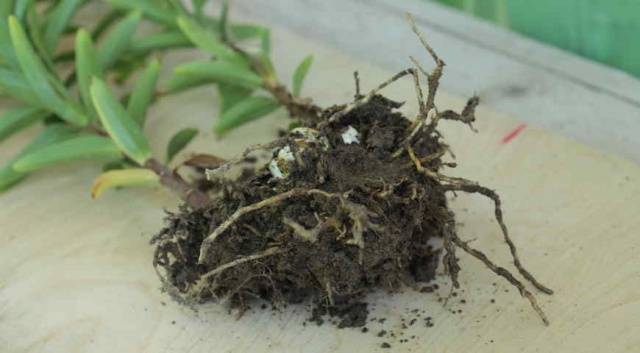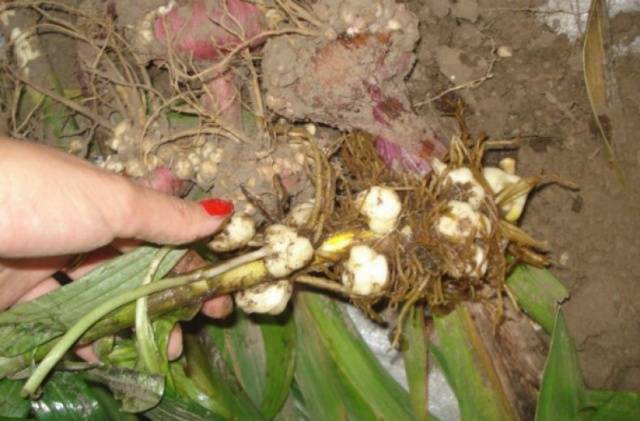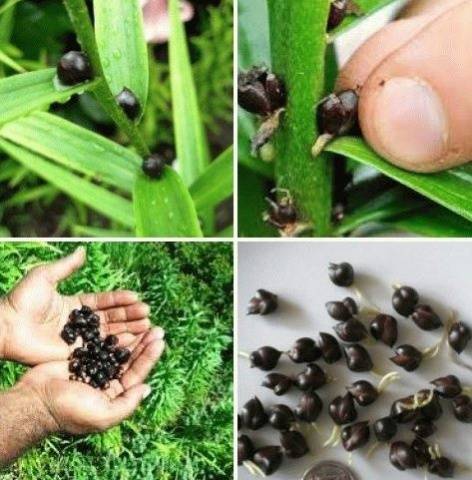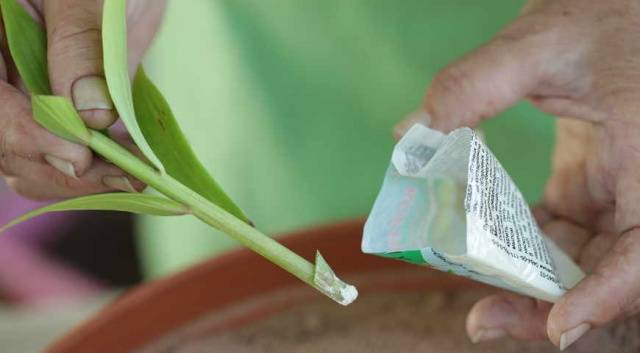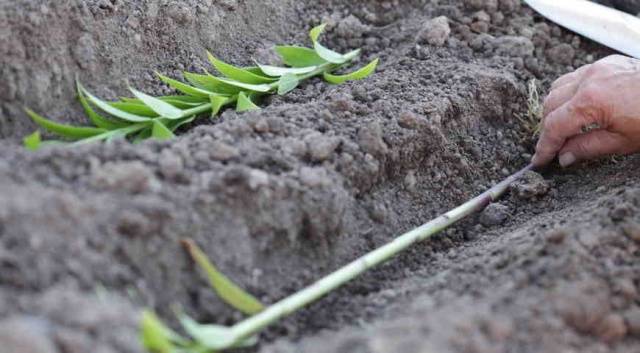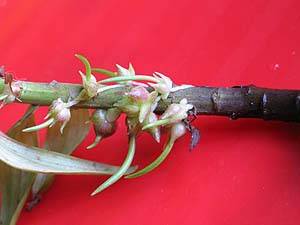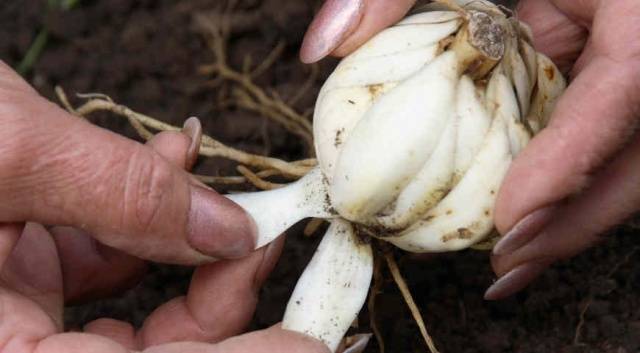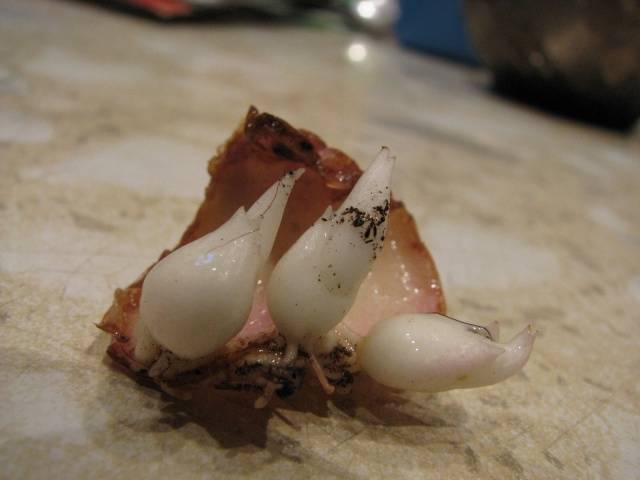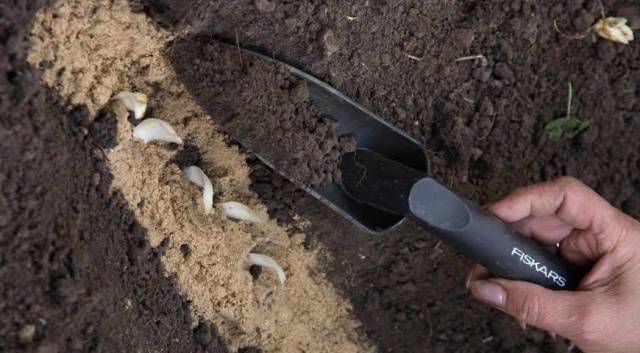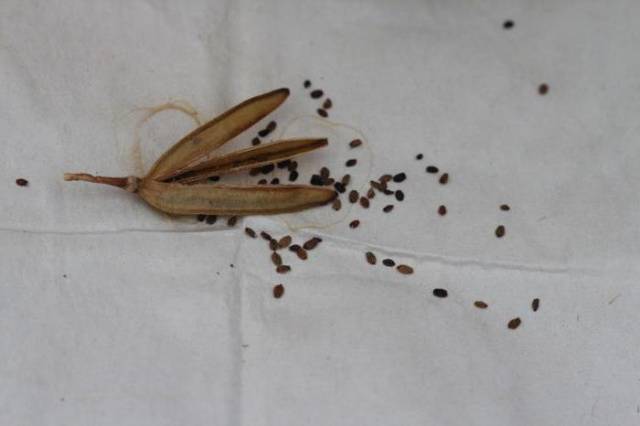Content
- 1 Reproduction of lilies by dividing the bush
- 2 How to propagate lilies by children
- 3 Propagation of lilies by bulbs
- 4 How to propagate lilies with stem cuttings
- 5 Getting new lily plants from a flower shoot
- 6 How to propagate lilies with leaves
- 7 Reproduction of lilies by scales
- 8 Reproduction of lilies by seeds at home
- 9 Reproduction of lilies in the spring by preparing the bottom of the bulb
- 10 Conclusion
Lilies are luxuriously blooming perennials, which have many admirers. The easiest way to grow a lily is by buying an onion in a store or garden center and planting it in the ground in spring or autumn. But the prices for lily bulbs, especially of new beautiful varieties, are so high that not everyone can afford to buy them in sufficient quantities. But what a pleasant surprise it will be to find out that lilies are not only unpretentious flowers, they also reproduce very easily, and there are so many ways of reproduction that everyone can find the most suitable one for their conditions.
Reproduction of lilies by dividing the bush
This method is rightly considered the easiest and most affordable even for those who have never dealt with lilies before. Lilies, like most perennials, grow over time and if they are not transplanted, then after a few years several bulbs may form in the nest. Their number is quite easily determined by the number of stems that grow out of the ground in spring.
Therefore, once every 3-4 years in late summer or autumn, a lily bush is dug out with a pitchfork, carefully divided into separate bulbs and each is planted in a separate new place. If you act carefully, then the plants do not cause almost any disturbance, and in the next season they will already actively and profusely bloom.
This method is good for everyone, except that you cannot get a lot of lilies in this way at once. In addition, not all lily species form replacement bulbs. Reproduction of some species, for example, tubular and oriental hybrids, is difficult in this way, because they form small and rare bulbs.
How to propagate lilies by children
The method may somewhat resemble the previous one, since it is also necessary to dig up a bush in the fall and examine it in search of small bulbs that can and should be used for reproduction. The main difference is that these small daughter bulbs are formed on the underground part of the stem; in some varieties of lilies (for example, Asian hybrids), a lot of them can form in one season - up to several dozen.
But at the same time, they are still not large enough to fully bloom next year. Baby bulbs are separated from the mother's stem and planted on a separate bed, to a depth of about 3 cm, thoroughly cleaned of weeds, and are well covered for the winter with fallen leaves or straw. For the next year they will gain strength and growth.
It should be noted that the mother's lily bulb can be left in the same place or transplanted to another flower bed - its development and flowering for the next year will not be affected in any way.
In the fall, already well-formed bulbs can be planted in specially planned places for them, in flower beds and in mixborders, so that next summer they would delight you with their flowering.
Such types of lilies as canadian, golden, beautiful, long-flowered, tiger, leopard lilies easily form baby bulbs.
Propagation of lilies by bulbs
The variety of lilies and, accordingly, the ways of their reproduction is impressive: some, as mentioned above, form after flowering and seed formation, replacing bulbs, others do not form them. For some, a whole family of children is formed every year at the underground base of the stem, and there are those in which children are formed right in the axils of the leaves of the outer stems. They are usually called bulbs or air bulbs. Under natural conditions, after the lily has faded, they simply fall to the ground, take root and germinate in the form of new plants. There can be up to 100 of them on one plant.
Of course, for the gardener, bulbs are an excellent planting material that allows you to get many lilies that retain all the properties of the mother plant. In addition, among the many ways of breeding lilies, this one is one of the most inexpensive. True, flowers are usually formed only in the third year, and full-fledged abundant flowering can be expected only in the fourth season.
But not all lilies are capable of forming them. Typically, this ability is distinguished by Tubular and Asian hybrids, as well as species such as: tiger, Sargent, bulbous, sulfur-colored.
Some types of lilies (Long-flowered, saffron, Thunberg, Formosan, snow-white, umbrella) can form bulbs on the stems if you cut off their buds, and the stems are slightly bent to the ground and covered with earth.
In general, simply removing the buds stimulates the formation of air bulbs in the axils of the stem, in addition, from this procedure they grow larger.
The very process of propagation of lilies by bulbs is very simple. Usually, 2-3 weeks after the end of the flowering of lilies, they crumble themselves, so it is important to have time to collect them before this moment. The ease of separating the bulb from the stem and the formation of small roots on them serves as a signal of their maturity. Their sizes can vary from 3 to 8 mm in diameter. There are usually 2-3 bulbs at the base of each leaf. First, they are collected in a separate container. Special beds are prepared in advance for cultivation, so that it is easier to care for them, and they would not get lost among the weeds.
The collected bulbs are soaked for 2 hours in a 0.2% solution of foundationol and planted to a depth of 5-10 mm at a distance of 8-10 cm from each other. You can leave 20 cm between the rows. The plantings are spilled and mulched with straw, dry leaves or peat before the onset of cold weather. In the spring, the mulch is removed and watered, young lily plants are weeded as needed. In the first year, lilies grow only leaves without a pronounced stem up to 20 cm high, the bulb reaches 10-12 mm in size. In the fall, they can already be planted in a permanent place, in a flower bed.
In the second season, lilies already have a stem with leaves up to 25-30 cm high, on which bulbs may already begin to appear. Flowers form, as a rule, in the third year after planting, when the bulbs reach 25-30 mm in size and the stem grows up to 50 cm in height. From the fourth season on, lilies reach the state of fully developed, mature plants with large bulbs.
How to propagate lilies with stem cuttings
If you want to quickly propagate lilies and are thinking about how to do it, then take note of the following method.
In the spring, a young flower shoot is carefully separated from the lily. It is desirable that it be no more than 10-15 cm in height. The shoot is treated with root roots and immediately planted in a spacious pot with drained and nutritious soil or, if weather conditions permit, immediately into the soil, adding a little sand to the hole.
After abundant watering, the shoot is covered on top with a plastic bottle with a cut off bottom and without a lid. It will serve as a mini greenhouse for better rooting of the lily stem. If the soil is not allowed to dry out, then the rooting of the shoot will occur in 1.5-2 weeks, and after a few more weeks, bulbs will begin to form near its base. Then the bottle can be removed, and the shoot itself can be covered with light earth in order to increase the number of bulbs formed.
In August, the formed bulbs can be separated and planted separately for growing. Flowers with this method of reproduction may appear as early as the next, or the second year after planting.
Getting new lily plants from a flower shoot
The most interesting thing is that lilies can also be propagated by cuttings after flowering. Moreover, you can try to use this method to propagate lilies from a bouquet that was presented to you for any celebration.
After the end of the flowering of the lily in your garden, completely cut off its peduncle along with the leaves (a stump, 15-20 cm in size, it is better to leave it so as not to forget about the place where the bulb is planted) or take a flower shoot from a wilted bouquet.
In a shady place of the site, pull out a small groove, about 2 cm deep, and a length equal to the length of the cut shoot. The soil should be loose, light, but quite nutritious. Lay the lily flower shoot horizontally in this groove and cover it with a light, loose earth mixture on top. Then spill everything abundantly with a stimulant solution (Epin, HB-101, Zircon, succinic acid). It is better if it is possible to cover the landing site with film or lutrasil on small arcs. After two months, small bulbs should form on the stem, which are best left untouched until next spring. For the winter, mulch the planting site abundantly with peat, humus or sawdust.
The next spring, the bulbs can already be planted in a permanent place in the garden or in containers for growing in a greenhouse or on a balcony.
How to propagate lilies with leaves
Lilies can even be propagated by leaves. Moreover, this method is best applied to lilies: Snow-white, tiger, Regale, Maksimovich, Thunberg, long-flowered and sulfur-colored.
If your friends or neighbors have lilies of the varieties listed above, then ask them during the budding period to carefully pick a few leaves with a base from the top of the stem and plant them, burying them half the length in an inclined position. It is better to plant them in a container with drainage holes, into which pour 5-6 cm of loose soil, and on top 3-4 cm of wet river sand.
The container must be covered with a bag, which must be removed and turned over every day, removing accumulated moisture.
After about a month, small bulbs form at the base of the leaves, then the bag can be removed. For the winter, the container is placed in a frost-free room or buried in the garden with insulation from the fallen leaves on top.
The next year, in spring or autumn, the bulbs can already be planted in the garden in the flower bed.
Reproduction of lilies by scales
This method of reproduction of lilies is most popular among flower growers, first of all, because it can be used all year round, even in winter.
At the same time, you can get a large amount of planting material and save the mother bulb for flowering.
Its meaning lies in the fact that for reproduction the outer scales are used, of which the lily bulb consists. Up to 1/3 of its scales can be used without harm to the health of the mother's bulb.The most productive are the outermost layers - on each such scale, under favorable conditions, up to 5-7 bulbs can form.
Lilies from scales can be obtained in one year, however, they will bloom, most likely, in the second or even in the third year.
Already in early spring or even at the end of winter, you can buy lily bulbs of various varieties in garden stores. And from each of the most valuable varieties, you can get about a dozen or more scales.
How can lily scales germinate? First, carefully separate the required number of scales from the bulb, starting from the outermost ones. They are strongly deviated from the mother's bulb, and it is not difficult to separate them. Then prepare a thick plastic bag or other plastic container in which you do not mind making holes so that future young plants can breathe. Any loose substance can serve as a filler - it is ideal to use sphagnum moss, coconut substrate, vermiculite and even peat for germination. Sometimes a common peat mixture is used for growing seedlings.
The container or bag is filled with the filler of your choice, the separated lily scales are placed in it and slightly covered with a damp substrate. The bag is tied, holes are made in it, and it is placed for about a month in a warm room with a temperature of about + 22 ° + 24 ° С.
The video below shows in detail how to propagate lilies with scales.
After about a month, you can already observe how the first bulbs begin to appear on the scales. They grow intensively and they have tiny roots. After 1.5-2 months, they can be seated in separate pots.
True, the first flowering will have to wait for at least another one or even two years.
In the video for novice florists posted below, you can see the process of reproduction of lilies by scales in the form of a continuation of planting them in spring.
For many gardeners and summer residents, it is convenient to start reproduction of lilies with scales in the fall, when lily bushes are dug up for transplanting, planting or preserving at home (for non-resistant varieties).
The whole process is repeated with only one feature, that a month after the appearance of the bulbs on the scales, it is advisable to place them in a cooler room with a temperature of about + 17 ° C.
Reproduction of lilies by seeds at home
The seed method is suitable only for species of lilies, the seedlings of which are able to repeat the main parental characteristics. It is useless to propagate hybrid varieties of lilies using seeds.
Of course, seed propagation of lilies is a long and troublesome process that breeders usually use when breeding new varieties, but if you want to get a large number of strong and healthy seedlings that are maximally adapted to your conditions, then why not give it a try. Consider only that some types of lilies (long-flowered, snow-white, Canadian, luxurious, special, Hanson) will require artificial pollination from you in order to get viable seeds. Many full-fledged seeds are given by Henry, Tibetan, Uiolmotta, saffron, Martagon, Daurian, regale, drooping, Maksimovich, monochromatic lilies.
All lily seeds are divided into two groups according to the method of germination:
- aerial - when the cotyledon leaf comes out immediately to the surface and turns green
- underground - when the cotyledons germinate and remain in the soil, and the first true leaf appears on the surface of the soil.
If there are a lot of seeds, then it is better to sow them immediately in open ground on the prepared beds.In the case of a small number of seeds, they are sown in boxes and then dive into pots, like ordinary flower seedlings. It should be remembered that it can take from five to seven years from the moment of seed germination to flowering. Care for growing seedlings is traditional: watering, feeding, weeding.
Reproduction of lilies in the spring by preparing the bottom of the bulb
There is another rather exotic way of breeding lilies. In the spring, the bottom of a large bulb is carefully cut out, and then it is planted in the ground with the crown down, and the lower part without the bottom should be at the top. In the summer, the bulb will only need watering; when winter comes, the planting must be well insulated.
In the spring, all the bulbs formed by this time should be planted in the growing garden. True, the mother bulb dies as a result. But the number of children obtained is several times higher than the number that can be obtained from reproduction by scales.
Conclusion
A variety of methods for breeding lilies makes it possible for even the most inexperienced florist to soon decorate his garden with many luxurious flowers, and without much financial investment.
The most complete article on the propagation of lilies, 9 methods are described in detail with instructions and descriptions of the advantages and disadvantages of each method.
